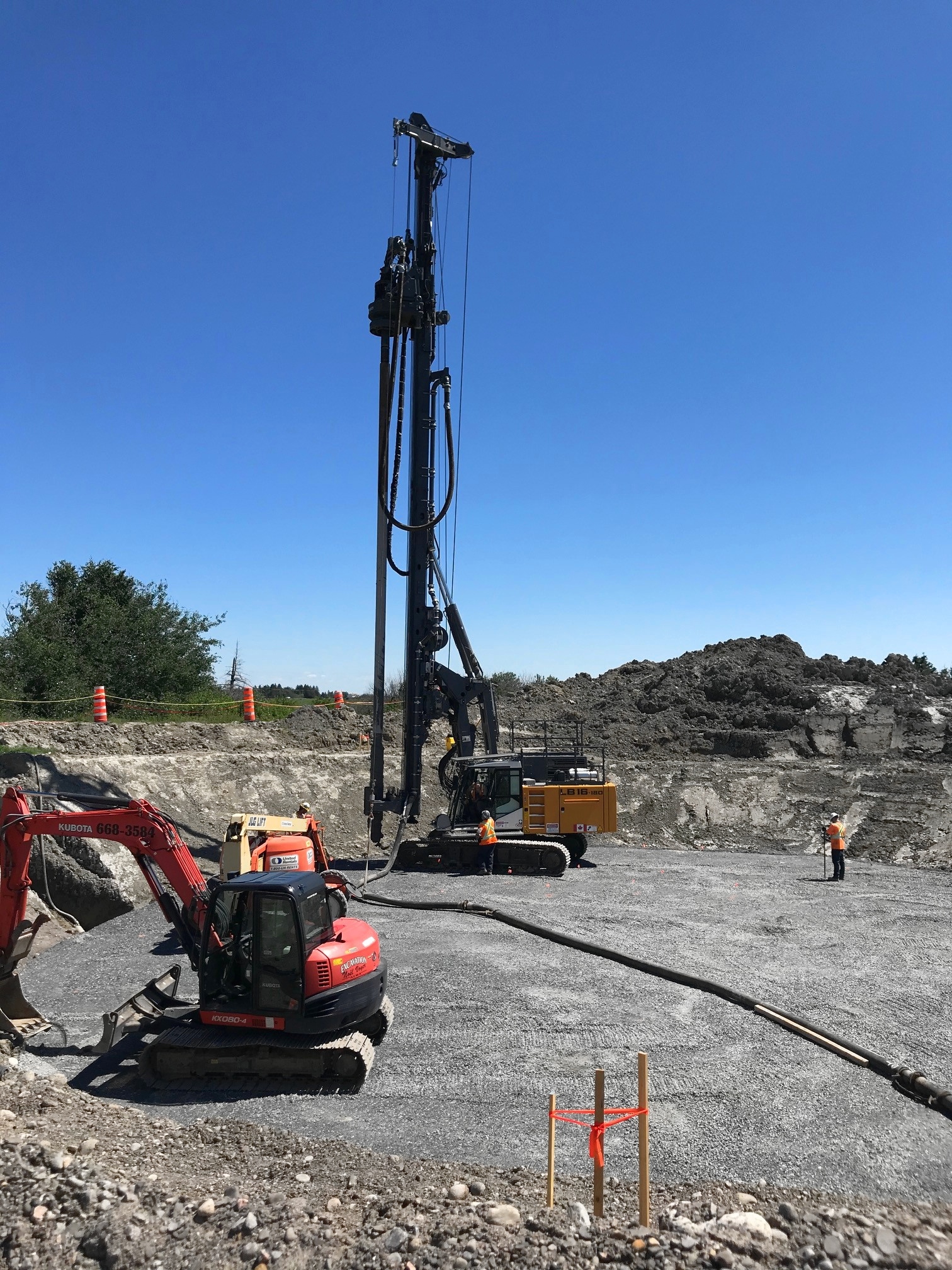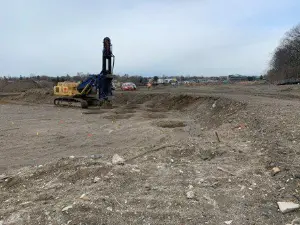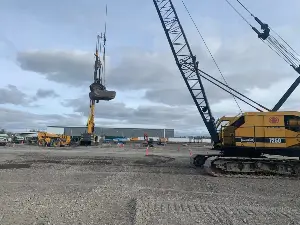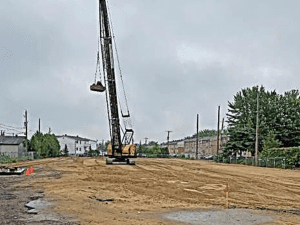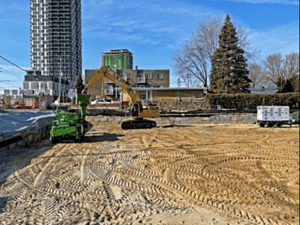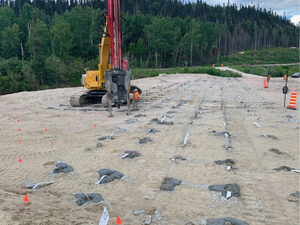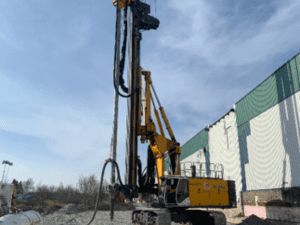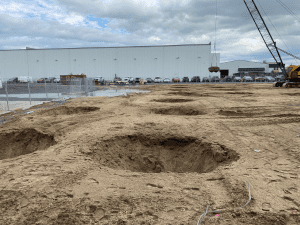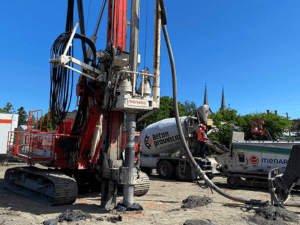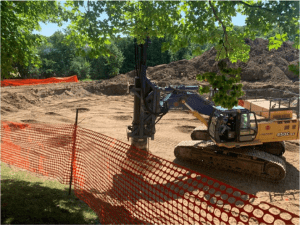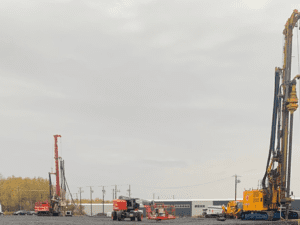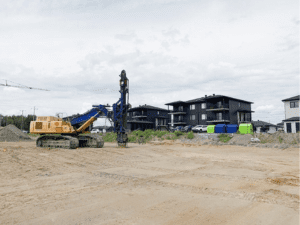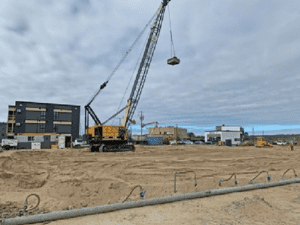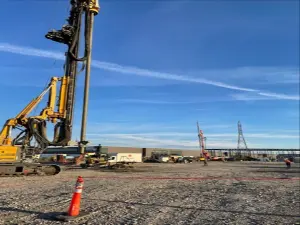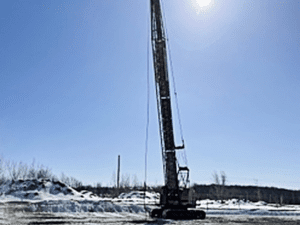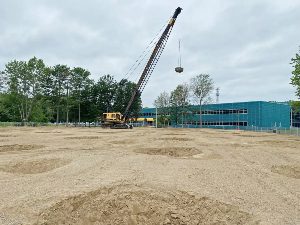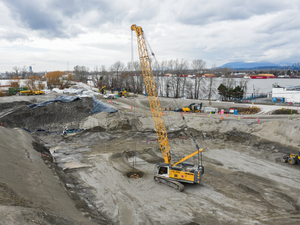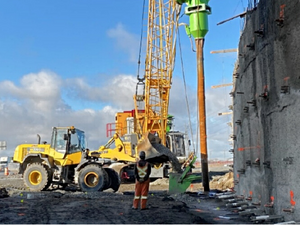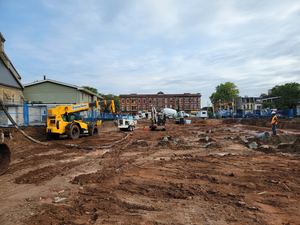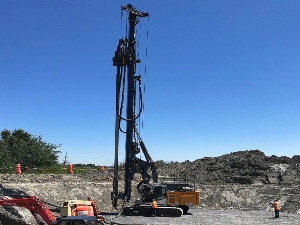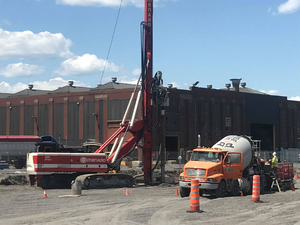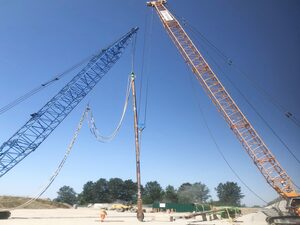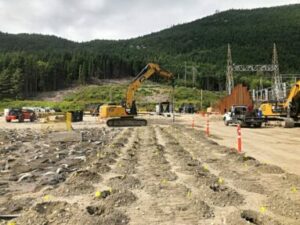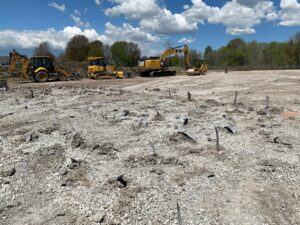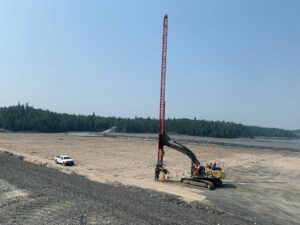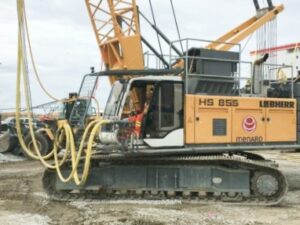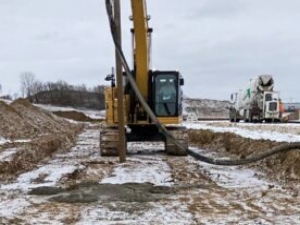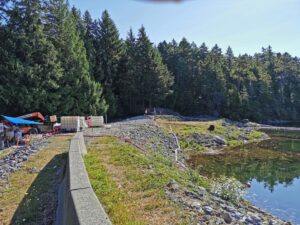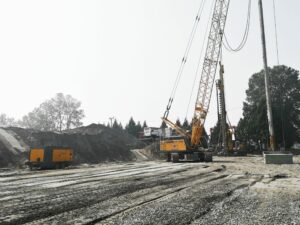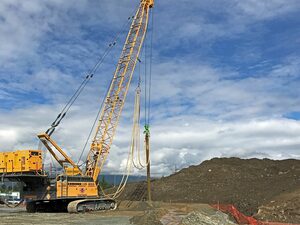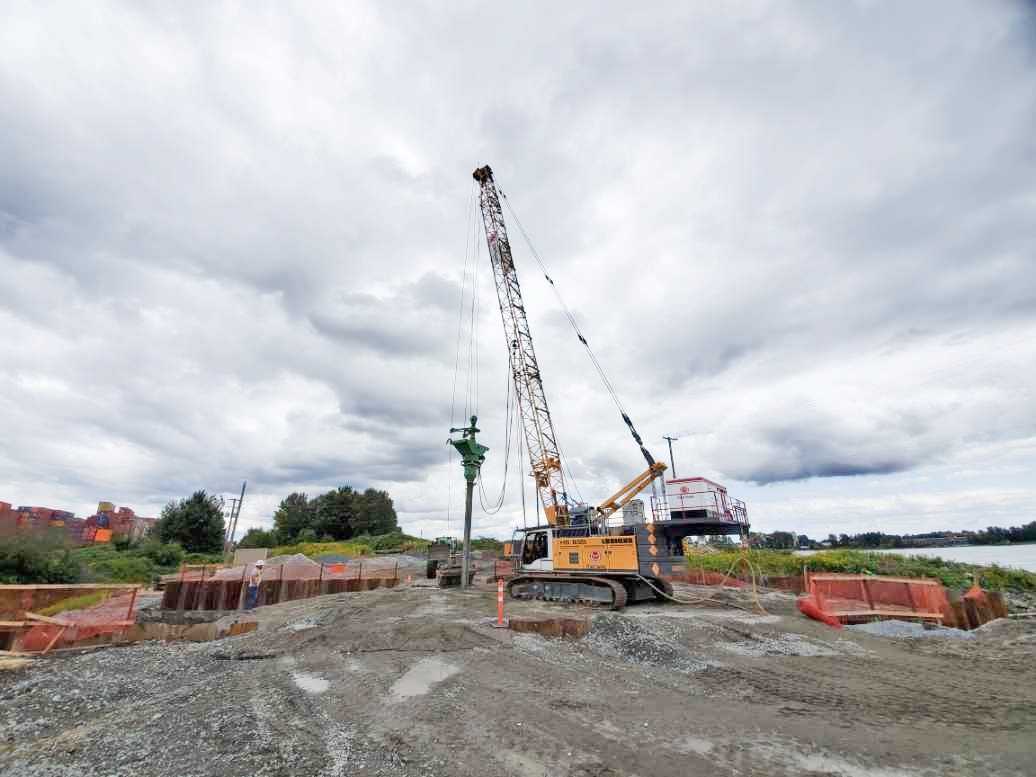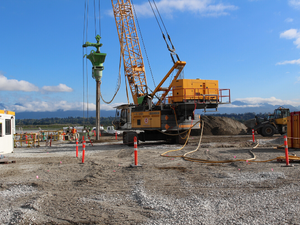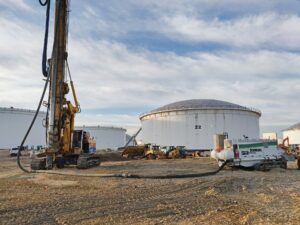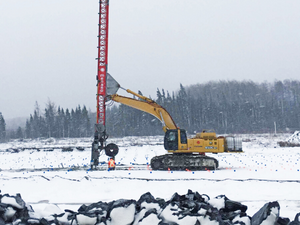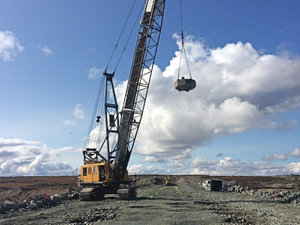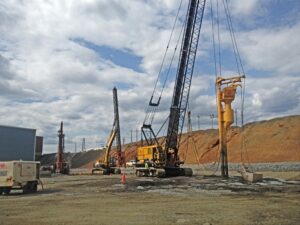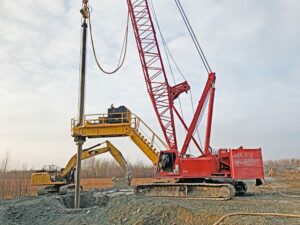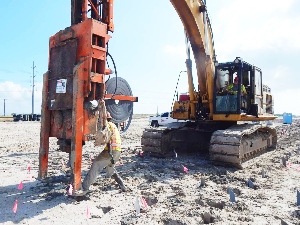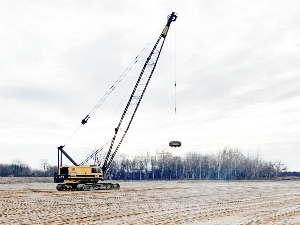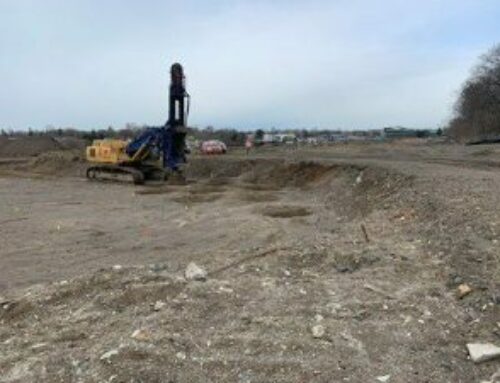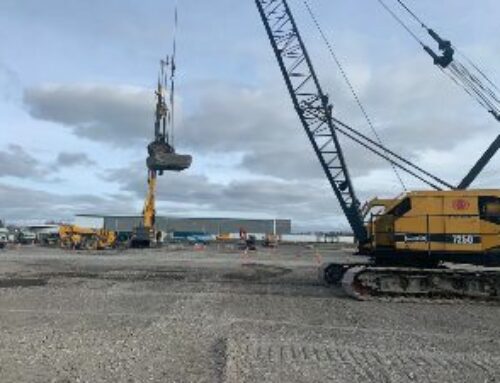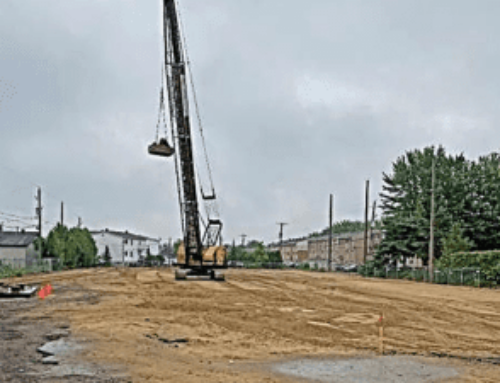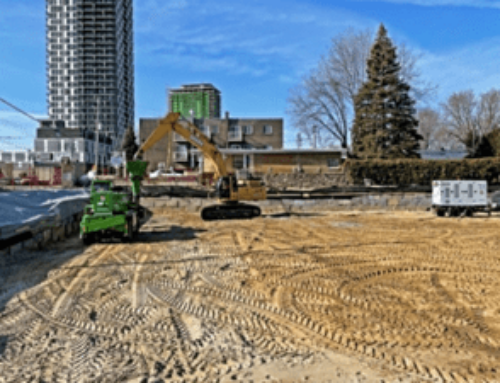Selected Technique:
Controlled Modulus Column (CMC)
Treatment Area:
390 EA.
Menard Canada received the mandate from Borea Construction to carry out soil improvement for the construction of future wind turbines at the Val-ÉO wind farm.
The Controlled Modulus Column (CMC) solution was chosen to reduce settlements and ensure the required bearing capacity under the foundations of 4 wind turbines.
The objective was to improve the thick layer of clay silt in these four locations.
Ground Conditions
The geotechnical data extracted from the drilling reports indicated the following profile:
• Organic soil: The thickness of the organic soil layer varies from 0 to 600mm.
• Cohesive deposit: The cohesive deposit is mainly composed of clay and silt to silt and clay with traces of sand.
The first 2.4 m of this soil is dense (layer of clay), resulting from the impact of the freeze/thaw cycle. The measured in-situ Cu varies between 36 to 92 kPa. The thickness of this layer varies between 6.2 m to 18.7 m.
• Granular deposit: A thin layer of granular material can be found on the rock.
• Rock: Rock was encountered between 18.7 m and the ground’s surface. The RQD values varied between 85% and 100%, corresponding to good-quality rock.
The unconfined compressive strength measured varied between 182 and 328 MPa.
The level of the natural terrain varies between elevations EL = 129.8 m and EL = 151.8 m, depending on the location of the site.
The water table level was between 0.3 m and 0.6 m below the level of the natural terrain in the spring and between 1.3 m and 2 m below the level of the natural terrain in the summer.
Menard Canada Solution
The performance criteria were as follows:
• 50 mm total post-construction settlements under uniform live load.
• 3mm/m (0.17) post-construction differential settlement under uniform live load.
• Static rotational stiffness of 31,250 MN*m/rad
• Rotational dynamic stiffness of 250,000 MN*m/rad
The controlled modulus columns (CMC) were made with one piece of equipment from 4 work platforms. A total of 380 CMCs were made.
A static test was carried out for each wind turbine (4 in total) and made it possible to validate the assumptions used in the dimensioning.

